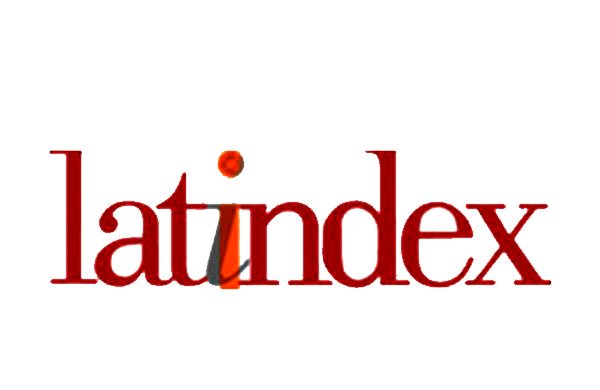Point-of-care ultrasound in diagnosis and decisions for patients with acute renal failure: case series
Point-of-care ultrasound no diagnóstico e na decisão terapêutica de pacientes com insuficiência renal aguda: série de casos
DOI:
https://doi.org/10.17765/2176-9206.2025v18e13103Keywords:
Case reports, Acute kidney injury, UltrasoundAbstract
Bedside ultrasound, known as Point-of-Care Ultrasound (POCUS), has proven to be a valuable tool in several areas of medicine. In nephrology, POCUS has gained prominence as a non-invasive and easy-to-apply technique to aid in the diagnosis and management of various renal conditions. Objective: to evaluate POCUS as an auxiliary tool in the diagnosis and therapeutic decision of patients with acute renal failure. In this study, we report a series of cases that illustrate the successful use of POCUS in nephrology practice, from October to December 2022. Six cases of patients admitted to an intensive care unit with different clinical manifestations related to acute kidney disease were included. All patients underwent renal ultrasound examinations using a mobile POCUS device. Our results demonstrated that POCUS was able to provide relevant clinical information in all the events studied, allowing for faster and more assertive decision-making in patients with different clinical presentations, such as: rhabdomyolysis, pre-renal injury, liver disease, heart failure with reduced ejection fraction (ICEFER), obstructive uropathy, and sepsis. We conclude that POCUS is a promising tool in nephrology practice, offering significant advantages in terms of agility and safety for the care of patients with acute renal failure. Its use allowed a quick and accurate assessment of renal structures, helping in the diagnosis, monitoring, and management of various nephrological conditions.
Downloads
References
1. Joannidis M, Druml W, Forni LG, Groeneveld ABJ, Honore PM, Hoste E, et al. Prevention of acute kidney injury and protection of renal function in the intensive care unit: update 2017. Intensive Care Med. 2017 Jun;43(6):730-749. https://doi.org/10.1007/s00134-017-4832-y
2. Mendu ML, Ciociolo GR, McLaughlin SR, Graham DA, Ghazinouri R, Parmar S, et al. A Decision-Making Algorithm for Initiation and Discontinuation of RRT in Severe AKI. Clin J Am Soc Nephrol. 2017 Feb 7;12(2):228-236. https://doi.org/10.2215/CJN.07170716
3. Corradi F, Bell M, Rosa SD. Kidney Doppler Ultrasonography in Critical Care Nephrology. Nephrol Dial Transplant. 2024 Aug 30;39(9):1416-1425. https://doi.org/10.1093/ndt/gfae103.
4. McDonald R, Watchorn J, Hutchings S. New ultrasound techniques for acute kidney injury diagnostics. Curr Opin Crit Care. 2024 Dec 1;30(6):571-576. https://doi.org/10.1097/MCC.0000000000001216.
5. Abebe A, Kumela K, Belay M, Kebede B, Wobie Y. Mortality and predictors of acute kidney injury in adults: a hospital-based prospective observational study. Sci Rep. 2021 Aug 2;11(1):15672. https://doi.org/10.1038/s41598-021-94946-3.
6. Watanabe YJA, Carvalho LMR, Guedes JVM, Baldoni AO, Belo VS, Otoni A. Acute renal failure, COVID-19 and deaths, worrying rates in intensive care units: a cross-sectional study. Sao Paulo Med J. 2024 Aug 9;142(6):e2023150. https://doi.org/10.1590/1516-3180.2023.0150.R1.13052024.
7. Romero-González G, Manrique J, Slon-Roblero MF, Husain-Syed F, De la Espriella R, Ferrari F, et al. PoCUS in nephrology: a new tool to improve our diagnostic skills. Clin Kidney J. 2022 Sep 12;16(2):218-229. https://doi.org/10.1093/ckj/sfac203
8. Narula J, Chandrashekhar Y, Braunwald E. Time to Add a Fifth Pillar to Bedside Physical Examination: Inspection, Palpation, Percussion, Auscultation, and Insonation. JAMA Cardiol. 2018 Apr 1;3(4):346-350. https://doi.org/10.1001/jamacardio.2018.0001
9. Gagnier JJ, Kienle G, Altman DG, Moher D, Sox H, Riley D, et al. The CARE guidelines: consensus-based clinical case reporting guideline development. Headache. 2013 Nov-Dec;53(10):1541-7. https://doi.org/10.1111/head.12246.
10. CARE Study Group. CARE Checklist: information to include when writing a case report [Internet]. 2013. Available from: https://smj.org.sa/sites/default/files/PDF/CAREchecklist-English-2013.pdf
11. Muniz Pazeli J, Fagundes Vidigal D, Cestari Grossi T, Silva Fernandes NM, Colugnati F, Baumgratz de Paula R, et al. Can Nephrologists Use Ultrasound to Evaluate the Inferior Vena Cava A Cross-Sectional Study of the Agreement between a Nephrologist and a Cardiologist. Nephron Extra. 2014 Apr 30;4(1):82-88. https://doi.org/10.1159/000362170
12. Moore PK, Hsu RK, Liu KD. Management of Acute Kidney Injury: Core Curriculum 2018. Am J Kidney Dis. 2018 Jul;72(1):136-148. https://doi.org/10.1053/j.ajkd.2017.11.021
13. Turgut F, Awad AS, Abdel-Rahman EM. Acute Kidney Injury: Medical Causes and Pathogenesis. J Clin Med. 2023 Jan 3;12(1):375. https://doi.org/10.3390/jcm12010375
14. Robbin ML, Chamberlain NE, Lockhart ME, Gallichio MH, Young CJ, Deierhoi MH, et al. Hemodialysis Arteriovenous Fistula Maturity: US Evaluation. Radiology. 2002 Oct;225(1):59-64. https://doi.org/10.1148/radiol.2251011367
15. Woodward CW, Lambert J, Ortiz-Soriano V, Li Y, Ruiz-Conejo M, Bissell BD, et al. Fluid Overload Associates With Major Adverse Kidney Events in Critically Ill Patients With Acute Kidney Injury Requiring Continuous Renal Replacement Therapy. Crit Care Med. 2019 Sep;47(9):e753-e760. https://doi.org/10.1097/CCM.0000000000003862
16. Torino C, Gargani L, Sicari R, Letachowicz K, Ekart R, Fliser D, et al. The Agreement between Auscultation and Lung Ultrasound in Hemodialysis Patients: The LUST Study. Clin J Am Soc Nephrol. 2016 Nov 7;11(11):2005-2011. https://doi.org/10.2215/CJN.03890416
17. Nash DM, Przech S, Wald R, O’Reilly D. Systematic review and meta-analysis of renal replacement therapy modalities for acute kidney injury in the intensive care unit. J Crit Care. 2017 Oct;41:138-144. https://doi.org/10.1016/j.jcrc.2017.05.002
18. Ostermann M, Liu K, Kashani K. Fluid Management in Acute Kidney Injury. Chest. 2019 Sep;156(3):594-603. https://doi.org/10.1016/j.chest.2019.04.004
19. Patel S, Puri N, Dellinger RP. Sepsis Management for the Nephrologist. Clin J Am Soc Nephrol. 2022 Jun;17(6):880-889. https://doi.org/10.2215/CJN.14381121
20. Scholz H, Boivin FJ, Schmidt-Ott KM, Bachmann S, Eckardt KU, Scholl UI, et al. Kidney physiology and susceptibility to acute kidney injury: implications for renoprotection. Nat Rev Nephrol. 2021 May;17(5):335-349. https://doi.org/10.1038/s41581-021-00394-7
21. Beaubien-Souligny W, Bouchard J, Denault A. Point-of-care ultrasound in end-stage kidney disease: beyond lung ultrasound. Curr Opin Nephrol Hypertens. 2018 Nov;27(6):487-496. https://doi.org/10.1097/MNH.0000000000000453
22. Jeon J, Kim DH, Baeg SI, Lee EJ, Chung CR, Jeon K, et al. Association between diuretics and successful discontinuation of continuous renal replacement therapy in critically ill patients with acute kidney injury. Crit Care. 2018 Oct 10;22(1):255. https://doi.org/10.1186/s13054-018-2192-9
23. Chen JJ, Chang CH, Huang YT, Kuo G. Furosemide stress test as a predictive marker of acute kidney injury progression or renal replacement therapy: a systemic review and meta-analysis. Crit Care. 2020 May 7;24(1):202. https://doi.org/10.1186/s13054-020-02912-8
Downloads
Published
How to Cite
Issue
Section
License
Copyright (c) 2024 Saúde e Pesquisa

This work is licensed under a Creative Commons Attribution 4.0 International License.
A submissão de originais para a revista Saúde e Pesquisa implica na transferência da Carta Concessão de Direitos Autorais, pelos autores, dos direitos de publicação digital para a revista após serem informados do aceite de publicação.A Secretaria Editorial irá fornecer da um modelo de Carta de Concessão de Direitos Autorais, indicando o cumprimento integral de princípios éticos e legislação específica. Os direitos autorais dos artigos publicados nesta revista são de direito do autor, com direitos da revista sobre a primeira publicação. Os autores somente poderão utilizar os mesmos resultados em outras publicações, indicando claramente a revista Saúde e Pesquisa como o meio da publicação original. Em virtude de tratar-se de um periódico de acesso aberto, é permitido o uso gratuito dos artigos, principalmente em aplicações educacionais e científicas, desde que citada a fonte. A Saúde e Pesquisa adota a licença Creative Commons Attribution 4.0 International.
A revista se reserva o direito de efetuar, nos originais, alterações de ordem normativa, ortográfica e gramatical, com vistas a manter o padrão culto da língua e a credibilidade do veículo. Respeitará, no entanto, o estilo de escrever dos autores. Alterações, correções ou sugestões de ordem conceitual serão encaminhadas aos autores, quando necessário. Nesses casos, os artigos, depois de adequados, deverão ser submetidos a nova apreciação. As opiniões emitidas pelos autores dos artigos são de sua exclusiva responsabilidade.

















